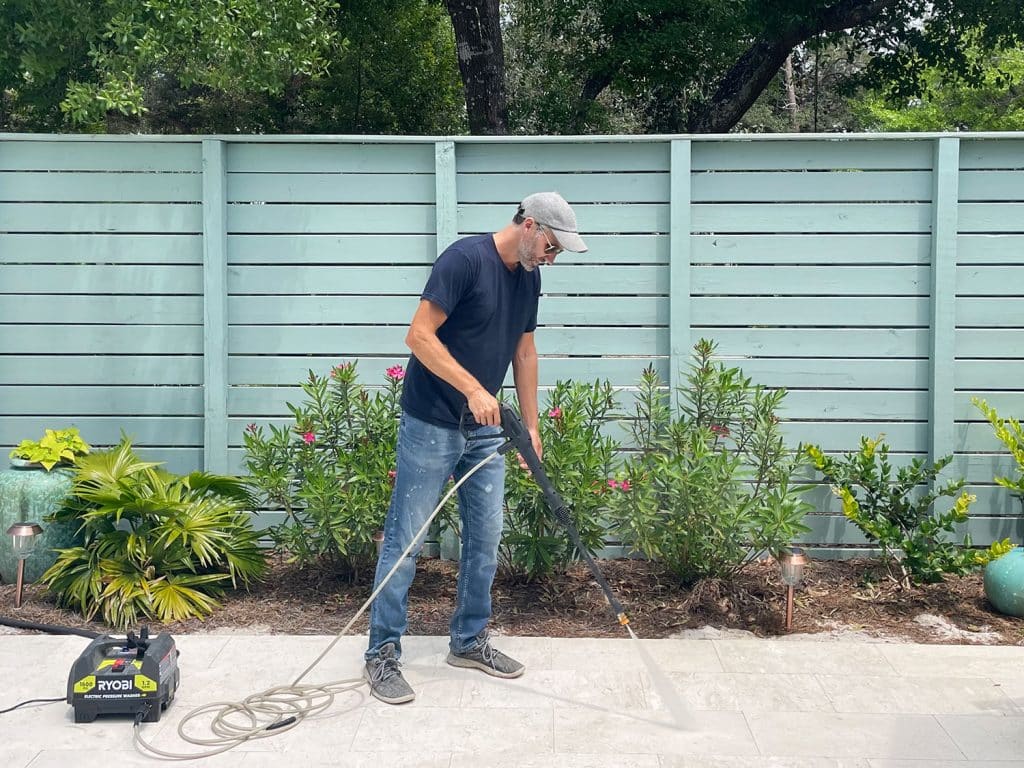
If you’re getting ready to power wash your home’s exterior, you’ve probably asked yourself: Should I cover my plants before power washing? After all, your landscaping is a big investment — and the last thing you want is to damage your flowers, shrubs, or garden beds while trying to clean your siding.
The short answer is: Yes, you should take steps to protect your plants. While you may not need to cover every inch with plastic, using a few smart strategies will help ensure your greenery survives — and thrives — after your power washing project. 🌼💧
🧼 Why Power Washing Can Be Harmful to Plants
Power washing seems like a harmless outdoor chore, but it can unintentionally hurt your landscaping if you’re not careful. Here’s how:
- Detergents and cleaning agents can be toxic to plant roots, leaves, and flowers
- High-pressure spray can break stems, rip leaves, or strip bark
- Over-spraying can cause soil displacement and erosion
- Sudden temperature changes (from hot water use) can shock plant tissues
While a quick mist probably won’t kill your rose bush, repeated exposure — or harsh chemicals — absolutely can. 🧪❌
🌿 When You Should Cover Your Plants
Cover your plants if:
- You’re using chemical cleaners, bleach, or strong detergents
- The plants are directly adjacent to the house (within 3–5 feet)
- You have delicate flowers or young shrubs
- You’re power washing a second-story area, where runoff may hit below
- The wind is strong, increasing the risk of spray drift 💨
Basically, if there’s any chance your plants will come into contact with chemicals or high-pressure water, take precautions. ✅
💧 When You Don’t Necessarily Need to Cover Plants
You might not need to cover every plant if:
- You’re only using water or a very mild, biodegradable soap
- The plants are more than 5 feet away from the spray zone
- The siding is being rinsed gently (low pressure)
- You’re cleaning a small area like a porch or entryway
In these cases, a simple pre-soak and rinse may be all that’s needed.
🧰 Best Ways to Protect Your Plants
Here’s a step-by-step plan for keeping your greenery safe:
1. Pre-Water Your Plants
Thoroughly soak your landscaping before you start power washing. This helps dilute any runoff and protects roots from absorbing chemicals.
💧 Why it works: Wet leaves and soil are less likely to absorb detergents or bleach.
2. Use Plastic Sheeting or Drop Cloths
Cover delicate or nearby plants with plastic tarps, drop cloths, or painter’s plastic. Secure them loosely with garden stakes or rocks — avoid wrapping them too tightly (they still need air!).
🪴 Pro tip: Don’t leave plastic on too long — it can trap heat and moisture.
3. Rinse Immediately After Washing
Once you’re done spraying your house, give your plants another gentle rinse with clean water. This removes any lingering detergent or residue.
🌿 Even biodegradable soaps can cause damage in concentrated form.
4. Avoid Harsh Chemicals When Possible
Choose plant-safe or biodegradable detergents whenever you can. Look for labels that say “non-toxic” or “safe for landscaping.”
🧪 Avoid bleach, ammonia, and caustic degreasers unless absolutely necessary — and always follow with a rinse.
Browse Amazon Here For Eco-Friendly Pressure Washing Detergents
🧠 Extra Tips for Plant Protection
- ✅ Spray away from plants, not directly toward them
- ✅ Work in sections so you’re not soaking everything at once
- ✅ Use lower pressure near garden beds
- ✅ Move potted plants out of the splash zone
- ✅ Avoid power washing during extreme heat — covered plants can overheat under plastic
🛑 What Not to Do
- ❌ Don’t leave plastic covers on for hours in direct sun — plants can suffocate or “cook”
- ❌ Don’t use high-pressure spray around mulch or garden soil — it can erode root systems
- ❌ Don’t skip rinsing, especially after using detergents
- ❌ Don’t assume all cleaners are plant-safe — even eco-friendly ones can be harmful if undiluted
🌼 What If Some Plants Get Damaged?
If you notice wilting, yellowing, or spotting on leaves after power washing:
- Rinse the plant thoroughly again
- Remove any visibly damaged foliage
- Watch the plant over the next week — most will recover with time
- Apply compost or fertilizer if the plant appears stressed
In most cases, plants will bounce back if addressed quickly. 🌱✨
🏁 Final Thoughts
So, should you cover your plants before power washing your house? Yes — especially if:
- You’re using chemicals
- You have sensitive or close-proximity landscaping
- You want to avoid any risk of damage
A few extra steps — like pre-soaking, covering, and rinsing — can go a long way in protecting your garden while still giving your home’s exterior a fresh, clean look. 💪🌷🏡
Power washing and a healthy garden can go hand in hand — it just takes a little planning.
Browse Amazon Here For Top Rated Power Washers And Accessories






